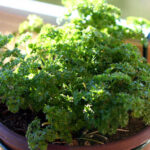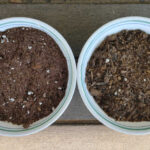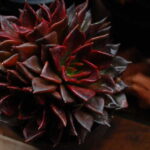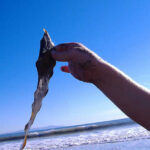Perhaps one of the weirdest pests in the garden is scale insects. At first glance, scale insects might not appear to be insects at all. And because there are so many types, identifying them can be difficult.
Scale insects feed on varying parts of plants, shrubs, and trees. What they consume largely depends on the scale species in question. Just like aphids, thrips, and spider mites, scale insects have host plants particular to their type.
Because they can do a lot of damage quickly, it’s important to control scale insects in your garden or your home on your houseplants. Infested plants especially need assistance as soon as possible.
Let’s talk about scale and how you can keep them from eating up your trees and shrubs.
Subscribe to the Epic Gardening Podcast on
Overview
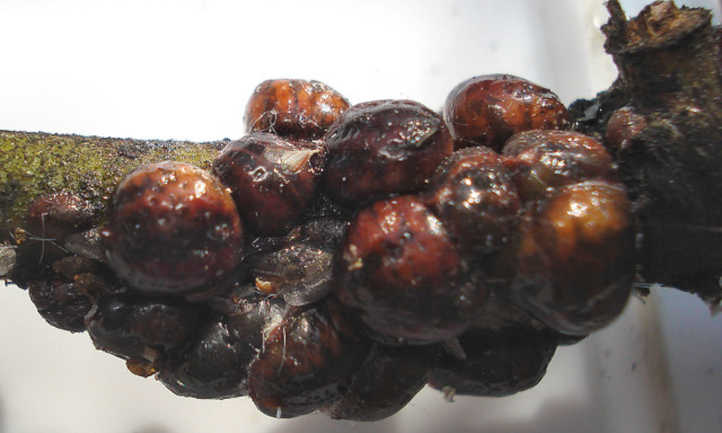
| Common Name(s) | Scale insects, scale pests, scales, mealybugs, etc. |
| Scientific Name(s) | Over 8000 species with unique names |
| Family | Coccoidea superfamily, multiple families of insects beneath that |
| Origin | Worldwide |
| Plants Affected | Most food crops, ornamental plants, trees, and grasses |
| Common Remedies | Horticultural oils, neem oil, insecticidal soap, cultural & biological controls |
What Are Scale Insects?
What do scale insects look like? Well, that varies. Overall, they are circular to oval insects that are 0.1 inches long and feed on plant sap within plant stems, and leaf tissue. Adult females are much more visible than tiny adult males, who are white to yellow with one pair of long antennae and one pair of wings. Females in certain species can reproduce asexually and do not need males to reproduce. There are several species of scale. Because they do not resemble other insects, and because they have such variance in appearance it may be more productive to talk about types of scale to look out for.
Types of Scale Insects
Species-specific controls make proper identification important. So here is a list of the most common scale insects you’ll find on indoor plants, herbaceous plants, and trees and shrubs. You’ll notice from this list that they are grouped into soft scales, armored scales, and miscellaneous species of scale insects.
Coccidae
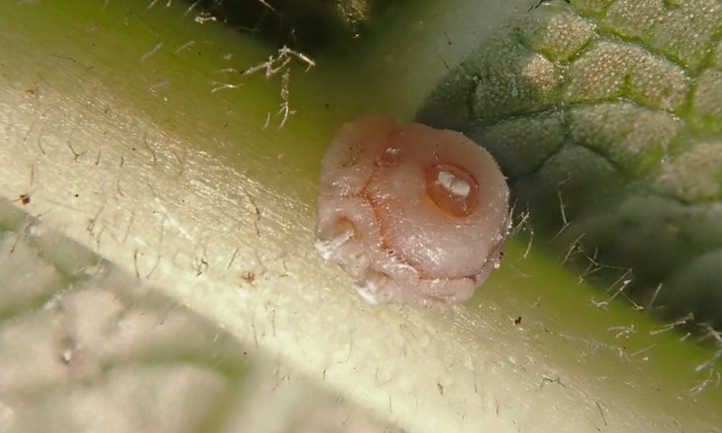
The coccidae are a family of soft scales that secrete a waxy coating that can protect them against many forms of insecticide, although any oily insecticide will likely stay on long enough to have an effect. They also produce red dyes emitted from carminic acid extracted from females. One of the best-known soft scales in this family is Coccus viridis, also known as the coffee scale or green scale. Coffee scale is a major agricultural pest in coffee crops, especially compared to other soft scales.
Other species of wax scales or soft scales include tree dwellers like the cottony maple scale (Pulvinaria innumerabilis), brown soft scale (Coccus hesperidum), or the calico scale (Eulecanium cerasorum). These soft scales flatten themselves against tree branches to feed, which is why many people mistake them for a fungus or bacterial infection – especially with brown scale that blends into the stems of woody plants.
Other soft scales in this genus and their hosts:
- Black Scale (Saissetia oleae): host include almond, apple, apricot, aspen, bay, citrus, cottonwood, coyote brush, fig, fuchsia, grape, holly, maple, oleander, olive, palm, peppertree, pistachio, plum, pomegranate, poplar, privet, prune, rose, and strawberry tree.
- Citricola Scale (Coccus pseudomagnoliarum): citrus and hackberry.
- European fruit lecanium, aka brown apricot scale (Parthenolecanium corni): a few evergreen species and alder, cottonwood, coyote brush, elm, fruit and nut trees, poplar, and toyon.
- Frosted Scale (Parthenolecanium pruinosum): walnut.
- Irregular Pine Scale (Toumeyella pinicola): Monterey pine.
- Kuno Scale (Eulecanium kunoense): stonefruit, especially plum.
- Oak Lecanium (Parthenolecanium quercifex): live oak.
- Lobate Lac Scales (Paratachardina pseudolobata): woody dicotyledonous plants, southern red cedar, palm, and a few herbaceous species.
Diaspididae
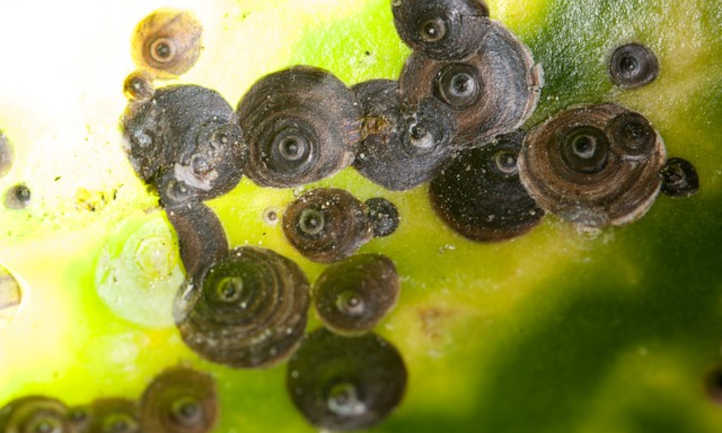
This genus is specific to armored scales. Over 2650 species of armored scales exist. Needless to say, these scales have an armor-like coating that they use to protect themselves from predators or insecticidal sprays. One of the most stubborn examples of armored scales is the San Jose scale, Quadraspidiotus perniciosus. This agricultural pest is widespread throughout the United States. While it was documented in the late 1800s in San Jose, it originates from China. In 1914, the San Jose scale was the first documented scale pest to develop resistance to insecticides.
Another major agricultural pest in the armored scales genus is the California Red Scale, Aonidiella aurantii. While its primary target is citrus trees, it also feeds on olives and other fruit and can be found on some vegetables such as pumpkin.
Other armored scales in this genus and their hosts:
- Cycad Scale (Furchadaspis zamiae): sago palm and bird of paradise.
- Euonymus Scale (Unaspis euonymi): wintercreeper, boxwood, bittersweet, English ivy, holly, privet, honeysuckle, cliff green, Japanese spurge.
- Latania Scale (Hemiberlesia lataniae): kiwi fruit.
- Minute Cypress Scale (Carulaspis minima): Mediterranean cypress.
- Oystershell Scale (Lepidosaphes ulmi): poplars and willows. Have oyster shell-shaped bodies.
- Tea Scale (Fiorinia theae): Chinese and Japanese hollies, bottlebrush, dogwood, euonymus, ferns, mango, Satsuma orange, orchids, tea plant, and yaupon.
Miscellaneous Species

Some scale insects don’t fall under soft or armored types. Here are some miscellaneous ones to look out for.
Margarodidae: Ground pearls are strange-looking large scale insects. Many of them appear to be cottony or soft. Others look almost berry-like in their shape and coloration, such as the Armenian cochineal scale. They are larger than most other forms of scale, mostly because of their cottony exterior. You’ll often find this scale with some ants on it, harvesting the honeydew which the scales provide.
Eriococcidae: One excellent example of the Eriococcidae is the wooly beech scale, Cryptococcus fagisuga. These scales look more like lumps or bumps on twigs and branches and can be mistaken for buds on the branch. Sapsuckers and other related scales are at risk from birds and beneficial predators like ladybugs.
Psuedococcidae: While most people don’t realize that mealybugs are a form of scale, they are. Unlike most scale, mealybugs have legs, but they seldom if ever move once they’ve located a good feeding spot. Mealybugs are common greenhouse scale pests. Widespread throughout agricultural areas, they also attack many commercial crops.
Other miscellaneous species not mentioned above:
- Ehrhorn’s Oak Scale (Mycetococcus ehrhorni): evergreen oaks in Southern California.
- Cottony Cushion Scale (Icerya purchasi): laurel-leaved snail tree.
- European Elm Scale (Eriococcus spurius): American and Chinese elms.
- Incense-Cedar Scale or Monterey Cypress Scale (Xylococculus macrocarpae): Incense-cedar, some cypress species, and junipers.
- Kuwana Oak Scale (Kuwania quercus): blue oak.
- Oak Pit Scale (Asterodiaspis spp.): valley oak, blue oak, English oak.
- Sycamore Scale (Stomacoccus platani): California sycamore and London plane.
Scale Insect Life Cycle

A scale population’s life cycles begin when scale eggs hatch. After the eggs hatch, scales go through varying numbers of nymph stages, called instars. Newly hatched nymphs begin in the crawler stage and are orange or yellow in most species. In this life stage, they move around the surface of a host plant or make their way to others via the wind, people, or birds. Then most species of scale crawlers feed on plant branches or leaf matter and may not move from that spot until they become adult females or male scale insects. Soft scales move around hosts and under the cover of bark as winter nears. It’s here immature scales overwinter and emerge again in spring. In this case, there is only one nymph stage in their life cycle. In the case of scale insects that feed in climates that are mild year-round, they’ll remain present on their hosts the entire time. Insect development, therefore, takes place out in the open.
Armored scales overwinter on their hosts and go through 1 nymph stage, and one as primarily adult female scales. They have multiple generations in one year, too. Because they don’t have prominent enough appendages, they stay in one place their entire lives. Soft scales only have 1 generation per year – except for the brown soft scale, which has multiple. These scales can move around, but very slowly due to their small legs. Some female scales can hold eggs underneath their shells, while others hold eggs underneath their waxy scale cover.
Identifying Scale Insect Damage
One way to identify scale damage lies in knowing how to identify scale insects. If you see little bumps congregating on the leaves of ornamental plants or fruit trees, try popping one off with a q-tip dipped in rubbing alcohol or clear liquor. Then inspect the underside of the bump. If it looks like an insect body, you’ve got scale. You can determine which scale you’re dealing with by using this article, information from local agricultural extension offices, or the USDA Agricultural Research Service.
Some scales have an oyster-shaped shell or a waxy covering. Cottony cushion scales have a cottony covering.
Another way to identify scale damage is to look for damage to particular plants. Some species stunt overall plant growth. Other species cause damage that appears at first like stress from underwatering and then progresses to the point of yellowing leaves and premature leaf drop. Some plants die, while other plants retain their brown leaves that have died from scale infestation. If the particular species of scale insects produce honeydew, it could progress to a sooty mold stage. This and ant harvesting honeydew may be signs you have scale.
You should look out for a scale infestation, especially when it’s warm. This is when most scale insects are active. This is also when the beginnings of sooty mold take place, as ants tend to fend off scale insects’ natural enemies. Most scale populations aren’t severely detrimental to your plants, but they can be. This is why it’s so important to protect your plants, trees, and shrubs as soon as you see scale covering varying parts.
Controlling Scale Insects
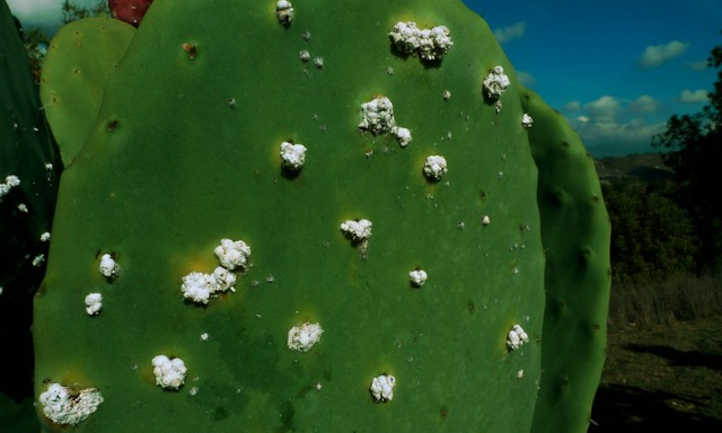
How do you kill scale insects? There are lots of different ways to go about managing and eliminating them. Scale control is important, especially because the presence of honeydew that some species secrete can turn into sooty mold. Let’s cover a few methods of control.
Cultural Control
Start with a good base of conditions for healthy plant growth. Ensure your irrigation schedule is consistent. Give them proper nutrition and care, including pest control. Pruning trees and shrubs to promote air circulation will prevent black scale, cottony cushion scale, and citricola scale infestations. Always remove any scale-damaged branches, twigs, or leaves as soon as they appear. Destroy the removed parts rather than put them in the compost pile.
Another way to culturally practice scale control is to replace plants that are susceptible to scale. Trees and shrubs, and sensitive plants that are prone to a soft scale infestation can be replaced by similar trees that aren’t susceptible to damage. Dealing with infested trees that are fully grown can be very difficult, so it’s best to make that decision before scale numbers have come to a head.
Finally, hand-removal of individual scale insects is a possibility. Using a cotton swab dipped in rubbing alcohol to do so is surprisingly effective. The rubbing alcohol makes the scale release from what it’s latched onto, and you can dispose of the pest. Note that this method is meant only for one or two insects, and isn’t effective on large outbreaks.
Biological Removal of Scale Insects
When it comes to biological control agents, you have lots of options – natural predators being one. By encouraging natural enemies of scale into the garden, you control scale infestations. While it is possible to purchase beneficial or predatory insects, like parasitic wasps, certain beetles, bugs, lacewings, and mites, this control method is more effective when you do so in conjunction with plants that host these natural enemies. Dust is a deterrent to these garden friends, so ensure your plants are free of dust. If you’re working with parasitic wasps that use adult scales as a breeding ground, your success can be found in puffy or darkened adult scales. Another sign they’re doing good work is the presence of the larvae visible under the scale shell. This is especially visible in armored scale, where wasp larvae leave a hole in the scale shell. The result? Dead scales!
Controlling ants is a huge part of preventing an uptick in scale populations. Not only does it prevent the spread of sooty mold that results from scales that excrete sticky honeydew, but it also removes scale protectors. Pruning to prevent bridges where ants can get to canopies where scale is prevalent is one mode of control.
Alternately, wrap your trees in a protective covering and place a sticky surface on top of the paper to trap ants. Ensure there isn’t damage to bark by checking under the wrap consistently. There are also sticky paint types that can be used to trap ants, either on a removable protective coating or directly on the bark. Remove accumulated debris or reapply sticky surfaces as needed to ensure ants don’t make their way across dirt or leaves that adhere to the trap. Ant bait is another viable option, especially slow-working baits. While they take time, they are highly effective.
Insecticidal Removal of Scale Insects
Using insecticides in scale control should be the last-ditch effort. Ensure first that you’ve given your plants a good foundation to promote plant vigor, and that cultural controls have been attempted. Before you spray, establish a healthy habitat for beneficial insects. Then start with organic controls like horticultural oils, neem oil, canola oil, and botanically-derived plant oils. Insecticidal soap is another effective option. These should be applied in the morning before the sun rises or at dusk. Spray the plant thoroughly at infestation sites, especially at leaf terminals and the undersides of leaves. Do not spray an infested plant in hot weather, and follow up with reapplications every 7 to 10 days until the scale is gone.
Horticultural oil sprays can also be sprayed on plants in dormancy. This is incredibly useful when it comes to armored scale which overwinters on trees in certain plant groups. Heavy infestations on oak trees can be sprayed just before buds open, in late winter or early spring. This method is not as effective on oyster shell scale, because they don’t have generations in winter. You can also spray horticultural oil sprays and insecticidal soap on an infested plant in spring and summer when immature scale insects have just emerged. Spray broadleaf plants in late spring and summer. Spray twig terminals and the undersides of leaves to cover the insect underneath.
Aside from horticultural oil, systemic insecticides are a form of chemical control that can be used to control scale insects. Because systemic insecticides call for localized application in the form of injections, they may be better for the environment than horticultural oil. Trunk applications will be faster than soil injections, and some systemic insecticides should be applied by professionals. So weigh your options when it comes to chemical controls. It may be much easier to use horticultural oils or plant-based organic pesticides on ornamental shrubs and plants than it is to hire an exterminator. Furthermore, systemic chemical control can sometimes cause a spider mite outbreak because they are damaging to beneficial insects, whereas horticultural oils do minimal damage or none at all if they are applied correctly.
Preventing Scale Insects
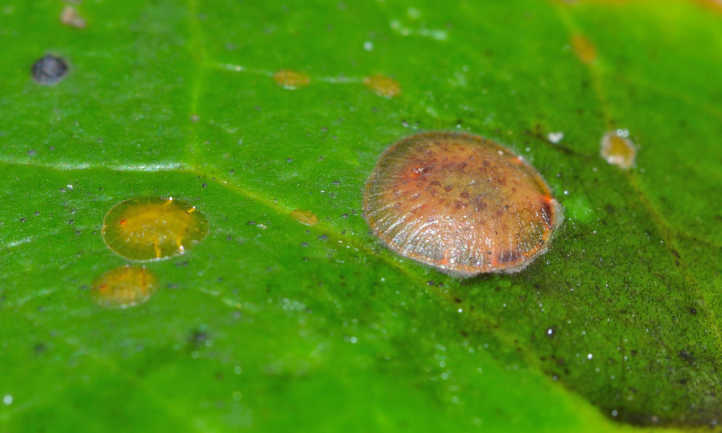
What causes scale insects? Well, as we’ve discussed, scale insects tend to attack plants that don’t have a good foundation for healthy growth. Another thing that causes scale is planting plants that host-specific scale insects. For instance, if you plant camellias and holly plants, you’re providing habitat for tea scale. Instead of growing those plants, consider growing similar plants that aren’t hosts.
Another thing we’ve already discussed is controlling ants in your garden. Especially if you’re going to grow hosts, keep the populations of ants down in your yard first. After you plant a host, consider the tree wrap option we talked about in the cultural control section to catch any ants that might head up the plant to consume scale honeydew.
Provide adequate nutrients and irrigation. The basis of these two foundational aspects of plant care is soil. Healthy soil retains enough water to handle moisture fluctuations. Nutrients provide adequate biofeedback that ensures plants are absorbing the water they need at the root level. Another important way to prevent scale is to develop a significant habitat for beneficial predators, like parasitic wasps that lay their eggs under the shell of armored scale.
Frequently Asked Questions
Q: Are scale insects harmful?
A: Indeed, they are. That’s why it’s important to identify and control them as soon as possible.
Q: What do scale insects do?
A: They sit in one area sucking plant juices for their lifespan. They cause damage to plants in the process.
Q: Where do scale bugs come from?
A: They usually end up on plants from contaminated soil, leaf litter, or unsanitized pots.


